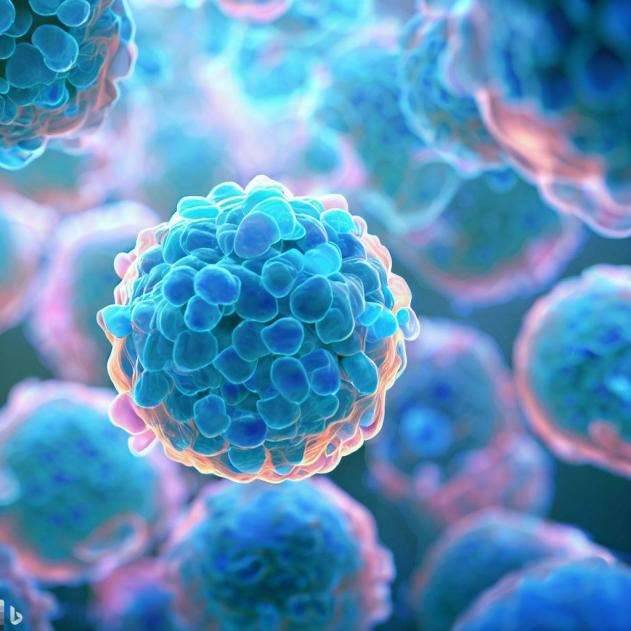In recent years, TCR sequencing has become a vital area of research for investigating the structure and distribution of T cell receptors. The TCR, also known as the T cell receptor, is the fundamental component used by T cells to recognize antigens, stimulate T cell activation, and promote proliferation. TCR sequencing is essential in various research areas, including identifying new immunotherapy targets, studying immune therapy and injury mechanisms…

The Main Three Studies of TCR Detection
One of the main research tasks of TCR detection is to help researchers understand the characteristics of T cell clonal distribution, especially the changes in disease state or after treatment, and to provide support for disease diagnosis and treatment. Specifically, researchers examine whether the clone distribution is concentrated or dispersed. For instance, TCR immune repertoire sequencing is widely used in studying the efficacy of CAR-T cell therapy, where the TCR clone distribution changes from a dominant clone before treatment to a dispersed clone distribution after treatment. By examining the discreteness of the clone distribution, researchers can determine the corresponding tumor antigen-specific cells have decreased.
In addition, targeting TCR structures can help engineer T cells to enhance their specificity for antigens, thereby improving the efficacy of immunotherapy. The research tasks of TCR detection is the DNA/RNA/protein structural characteristics of antigen-specific TCRs: TCR structure is located to obtain the protein sequence of antigen-specific TCRs, which can be used to modify T cells to target and kill more antigen-specific cells.
Finally, TCR sequencing has been found to be immensely useful in the identification and classification of various tumor types, especially those relating to T-cell lymphoma and T-lymphoblastic leukemia, ie TCR rearrangement detection.
TCR Detection Method
Analysis of TCR by PCR+Capillary Electrophoresis Fragment
This method is mainly used to judge that malignant diseases (such as malignant lymphoma or lymphocytic leukemia) are caused by monoclonal hyperplasia at any stage of the TCR gene rearrangement process.
Bulk TCR Sequencing
It is mainly divided into full-length sequencing of 5’RACE method and multiplex PCR sequencing. The former can obtain the complete structure of the TCR sequence. For samples of complete quality, the complete structure of the TCR obtained by the 5’RACE method can be used to obtain the corresponding protein sequence, but the 3′ end of the RNA can be lost during this process, leading to significant deficiencies in TCR information. the multiplex PCR sequencing method is designed to address some of the limitations of the 5’RACE method. Specifically, the multiplex PCR method uses specific amplification primers for the CDR3 of the V region. This approach enables researchers to obtain information about the CDR3 region, even if the 3′ end of the RNA is lost. This is highly beneficial for the analysis of the clonal distribution of TCR, which is a critical area of research in this field.
Single-cell TCR Sequencing
The TCR sequence and other transcript sequences of each T cell can be obtained, wherein the TCR sequence is the full-length TCR structure, and the sequencing method adds template conversion and nested PCR technology on the basis of the 5’RACE method. The powerful value of single-cell TCR sequencing is that not only the full-length TCR structure can be obtained, but also the TCR distribution specific to cell groups can be obtained, such as the TCR clone distribution characteristics of CD4+ Treg cells and the TCR clone distribution characteristics of CD8+ CTL cells. The value of targeted analysis of CD typing of TCR master clone cells is that this information can determine the main role of antigen-specific T cells, whether it is auxiliary regulation, cell killing, or more other T cell functions. More importantly, single-cell TCR sequencing can simultaneously obtain the sequence structure of TRCA and TRCB paired with the same T cell. A paper published in Science in 2021 confirmed that only the correct binding position of TRCB and pMHC will trigger T cell activation, while TRCA and TRCB The correct pairing determines the correct binding of TCR and pMHC.
How to Choose TCR Detection Method
In the pursuit of TCR clonal diversity detection, the primary objective is to ascertain the extent of diversity with respect to the corresponding T cell antigens. Multiplex PCR or 5’RACE TCR sequencing are the potential modalities that can be employed to achieve this end.
However, in order to efficaciously identify the TCR structure of antigen-specific T cells, which in turn can aid in capturing the antigen-specific target cells or constructing TCR-T cells directed against antigens, 5’RACE TCR sequencing or single-cell TCR sequencing assumes paramount importance.
On the other hand, if the focus is on typing detection of T-lineage lymphoma or lymphocytic leukemia in blood tumors, then PCR + capillary electrophoresis fragment analysis of TCR might suffice. Of course, if high-depth TCR sequencing is executed, it could very well be implemented in detecting minimal residual foci associated with T-lineage blood tumors.

Leave a Reply